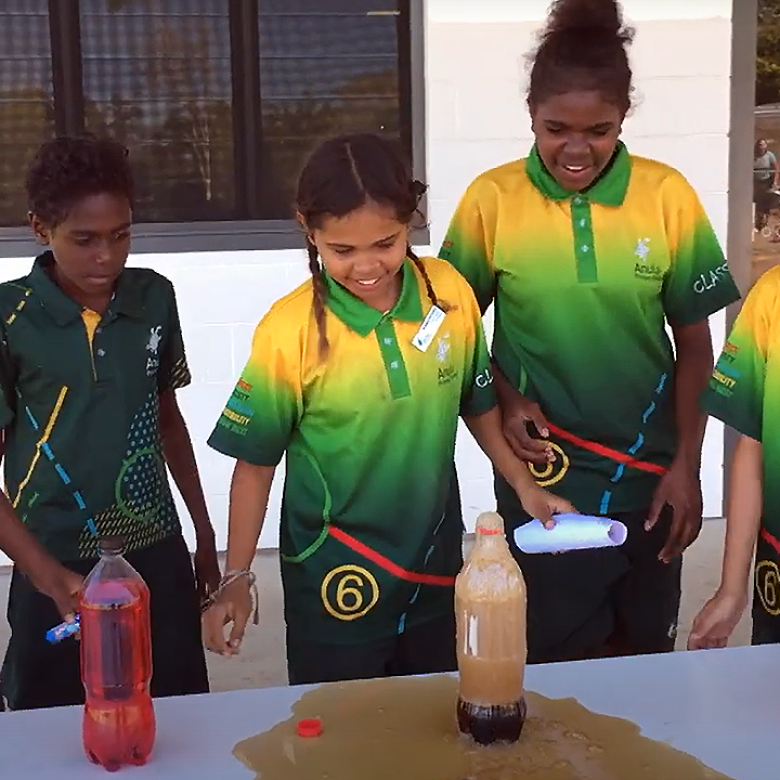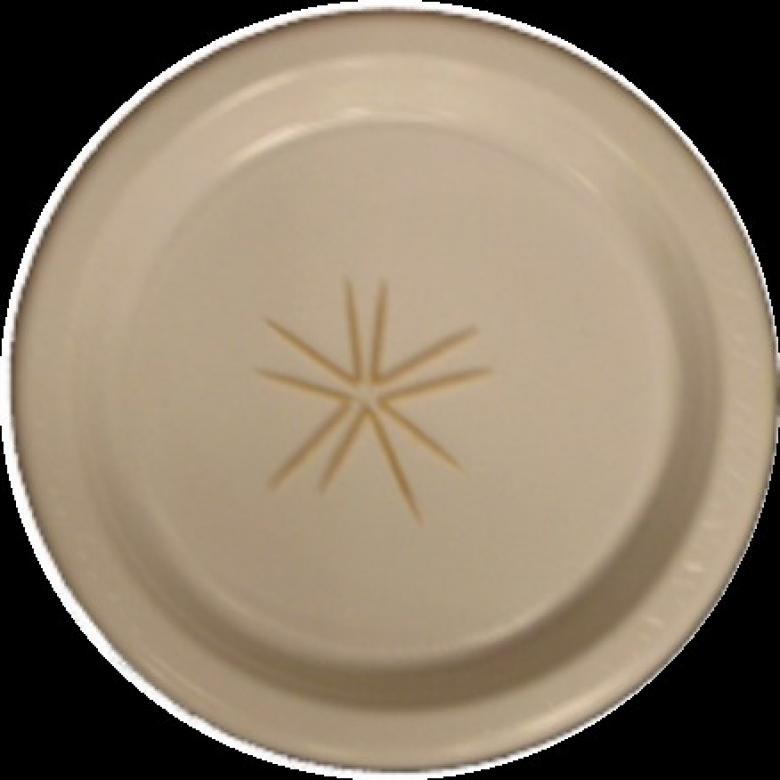You’ll need
- A funnel
- 150 ml white vinegar
- A 600 ml plastic bottle (like an old soft drink bottle – just make sure it’s empty, clean and dry)
- A balloon
- A teaspoon
- 2 heaped teaspoons of bicarbonate of soda (also called bicarb soda)
What to do
- Gather your materials on a flat surface.
- Put the funnel into the mouth of the plastic bottle and pour in the vinegar.
- Put the funnel into the mouth of the balloon and spoon in the bicarbonate of soda. Shake the balloon so the bicarbonate of soda falls into the round part of the balloon.
- Pinch and hold the neck of the balloon so none of the bicarbonate of soda falls out.
- Stretch the mouth of the balloon over the mouth of the plastic bottle.
- Hold the neck of the balloon firmly on the upright plastic bottle. Shake the bicarbonate of soda into the vinegar.
Questions to ask
What happened when the bicarbonate of soda and vinegar mixed? What happened to the balloon?
What would happen if you used different amounts of bicarbonate of soda and vinegar? Try using more of both, then more vinegar and less bicarbonate of soda, then more bicarbonate of soda and less vinegar.
Try replacing the vinegar with water, lemon juice, soft drink or milk. What happens?
What's happening
Mixing bicarbonate of soda and vinegar causes a chemical reaction called an acid–base reaction. The bicarbonate of soda is the base (also called alkaline) and the vinegar is the acid. When acids react with bases, they make water, a salt (not the kind that you put on your hot chips!), and carbon dioxide gas. The carbon dioxide gas is what fills the balloon and blows it up.
We can write out what’s happening as a chemical equation:
vinegar + bicarbonate of soda → salt + gas + water
or, using chemical names:
acetic acid + sodium bicarbonate → sodium acetate + carbon dioxide + water
or, using chemical formulas:
CH3COOH + NaHCO3 → NaCH3COO + CO2(g) + H2O
(C means carbon, O means oxygen, H means hydrogen and Na means sodium. The g means gas.)
A similar reaction happens when you use self-raising flour to make a cake rise.
Did you know
Just like the aliens in some sci-fi movies, humans and other mammals have acid in their blood. When you breathe in, the cells in your body use oxygen and make carbon dioxide. This carbon dioxide travels around your body in your blood as carbonic acid. The carbonic acid breaks down into carbon dioxide and water when it reaches your lungs. Then, you breathe out the carbon dioxide gas (and some water vapour).
Carbonic acid forms any time carbon dioxide mixes with water. That means fizzy drinks contain carbonic acid. And so do our oceans.
(Sound of bubbles popping)
Steve: Hi, my name’s Steve and I’m from the Questacon Science Squad. Today I’m going to show you how you can inflate a balloon even if you’re a bit out of breath.
You'll need:
- a 600mL plastic bottle
- a funnel
- a teaspoon
- bicarbonate of soda (or baking soda) and,
- 150mL of white vinegar.
First what you’ll need to do is get the funnel and insert it into the neck of your balloon. Then get your teaspoon and put in two heaped teaspoons of baking soda into your balloon and make sure you shake it so that all the baking soda goes to the bottom of the balloon. Next, get your funnel, put it in to the top of the bottle and pour in your vinegar.
(Sound of vinegar pouring into the bottle)
Now we’re going to get the neck of our balloon, stretch it over the top of the bottle so that it’s on securely. Now you want to hold onto the bottom of your bottle really tightly and tip up your balloon so that all of the baking soda goes into the vinegar.
(Steve shakes the balloon hard so the bicarbonate soda all falls out into the bottle)
(The contents of the bottle bubbles and fizzes up and the balloon inflates)
And you should get… a BALLOON BLOWOUT!








